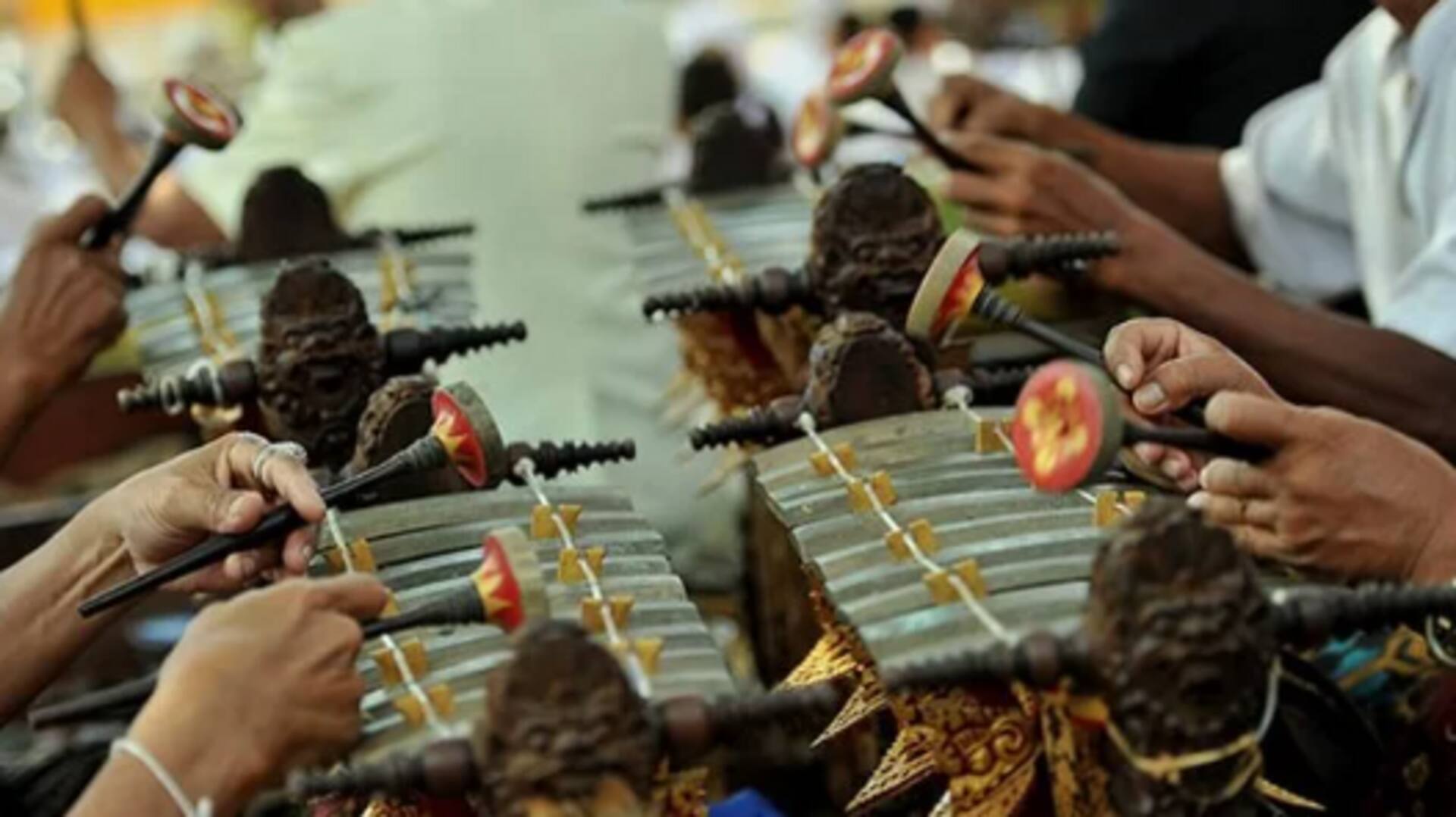
5 fascinating features of Balinese gamelan music
What's the story
Balinese gamelan music is mesmerizing and an inseparable part of the culture of Bali, Indonesia. Famous for its intricate beats and colorful sounds, this traditional ensemble music has enchanted listeners across the globe. The distinctiveness of instruments and the sense of community it stands for makes it a topic of interest for music lovers. Here are five interesting highlights that capture the magic of Balinese Gamelan music.
Distinct sounds
Unique instrumentation
What makes Balinese gamelan so interesting is its diversity of instruments—metallophones, gongs, flutes, and drums. Each instrument adds to the richness of the ensemble. The metallophones are usually crafted from bronze or bamboo, producing resonant notes that characterize the music's fabric. The range of instruments enables such intricate layers and harmonies that are equally mesmerizing and complex.
Intricate beats
Complex rhythmic patterns
The rhythmic structure in Balinese gamelan is what makes it particularly complex. Musicians play interlocking patterns, creating a dynamic interplay between different sections of the orchestra. These patterns require precise timing and coordination from the players, resulting in a lively yet harmonious performance. The rhythm often shifts unexpectedly, keeping listeners engaged with its unpredictability.
Collective harmony
Communal performance style
Gamelan performances prioritize community over individual virtuosity. Musicians collaborate to create a unified sound instead of showcasing solo skills. This collective effort creates a sense of unity among the performers as they synchronize their efforts to produce cohesive melodies and rhythms. It also reflects the communal values inherent in the Balinese culture.
Deep roots
Cultural significance
Gamelan music is culturally important in Bali. It is an integral part of ceremonies, festivals, and social gatherings. The music is an auditory backdrop for the celebrations that litter across the island. It is not just entertaining, the music also strengthens cultural identity by keeping the traditional practices alive for centuries.
Engaging spectacle
Visual elements in performances
Balinese gamelan performances usually also include a visual component such as a dance or theatrical performance along with musical accompaniment. Dancers glide gracefully to match the rhythmic beats, dressed in elaborate costumes that color each performance scene—creating a whole world where the sight meets sound on stage effortlessly.